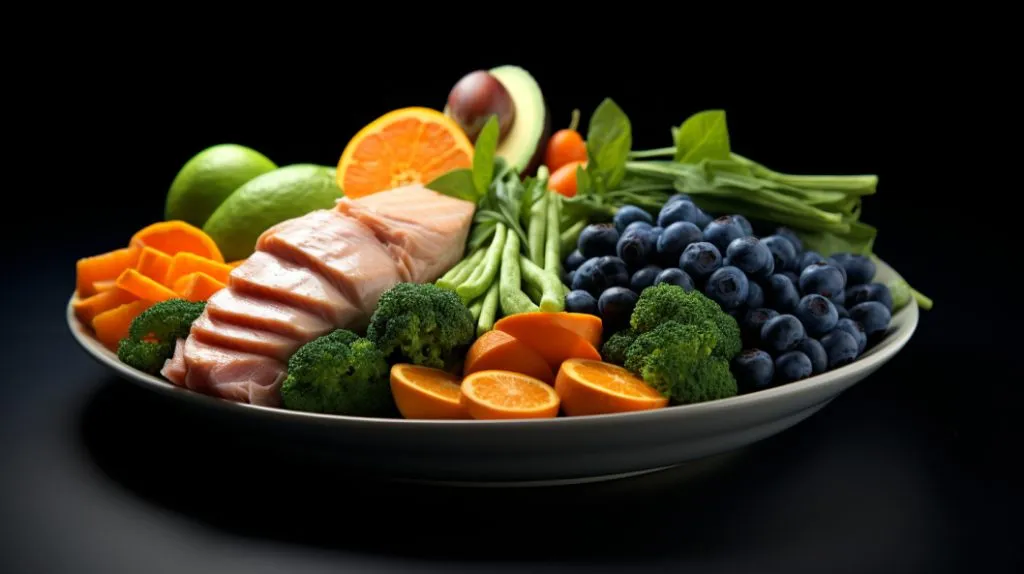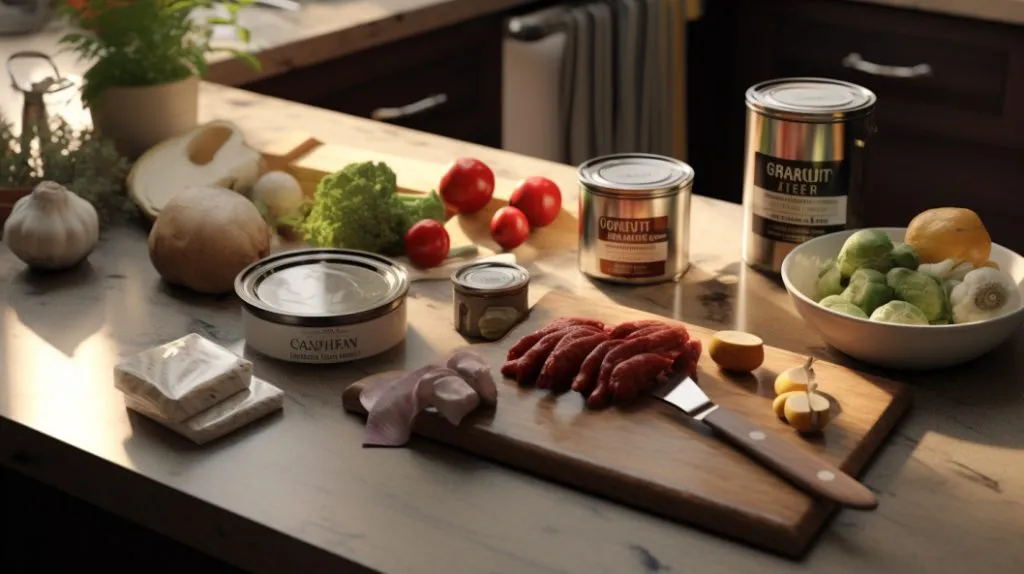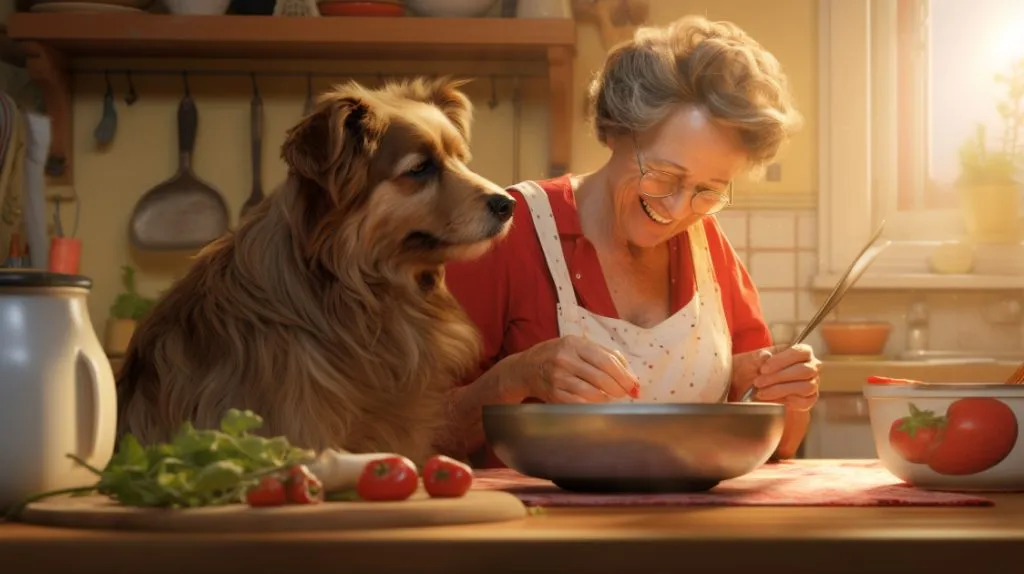Table of Contents
Welcome to the world of double the care! If you have a furry friend battling diabetes and pancreatitis, you know how important it is to provide them with the best care and nutrition. One way to do that is by preparing homemade meals tailored to their condition.
Diabetes and pancreatitis are common health issues in dogs; proper nutrition is crucial in managing these conditions. By feeding your dog homemade food, you can control every ingredient in their meals, ensuring they receive all the essential nutrients they need.
But what exactly should you include in their meals? This article will guide you through the necessary nutrients and provide some delicious homemade food for dog with diabetes and pancreatitis. Remember, it’s always a good idea to consult a veterinarian or canine nutritionist before making any dietary changes.
So, let’s embark on this journey of love and care and discover the benefits of homemade food for dogs with diabetes and pancreatitis!
Key Takeaways Of Homemade Food For Dog With Diabetes And Pancreatitis
- Homemade food allows for control over ingredients and quality, which is crucial for managing diabetes and pancreatitis in dogs.
- Proper nutrition, including high-quality protein, healthy fats, and complex carbohydrates, is essential for dogs with these conditions.
- Homemade food avoids harmful additives and preservatives found in commercial dog food, improving overall well-being and quality of life for dogs.
- Consulting with a veterinarian or canine nutritionist is important for creating personalized meal plans and making dietary changes for dogs with diabetes and pancreatitis.
Understanding Diabetes and Pancreatitis in Dogs

Diabetes is a medical condition that affects how the body uses glucose (sugar) for energy. It occurs when the body doesn’t create enough insulin or can’t use it properly. Conversely, pancreatitis refers to inflammation of the pancreas, an organ responsible for producing digestive enzymes and insulin. It can be either acute or chronic.
It has been suggested by some that around 28% of diabetes cases in dogs may be linked to or caused by recurrent or chronic pancreatitis, as opposed to acute pancreatitis.
Weight gain in dogs and other species has been associated with the development of serious health conditions such as diabetes and chronic pancreatitis. According to some studies, many dogs that develop diabetes also have chronic pancreatitis.
Both diabetes and pancreatitis require proper dietary management to help control symptoms and improve overall health. Homemade food can benefit dogs with these conditions, allowing for more control over ingredients and providing a tailored diet. Foods like lean meats (such as lean ground beef or chicken), green beans, sweet potatoes, and brown rice are often recommended due to their low-fat diet content and high nutritional value.
It is important to consult a veterinarian before making any dietary changes for a dog with diabetes or pancreatitis. They can guide you in creating a balanced and healthy homemade diet that considers the specific needs of the dog’s condition. Regular veterinary care, including blood tests to monitor blood sugar levels and pancreatic function, is crucial for effectively managing these medical conditions.
Benefits of Homemade Food for Dogs with Diabetes and Pancreatitis
When managing diabetes and pancreatitis in dogs, homemade food offers several benefits. Firstly, it gives you control over the ingredients and quality of the food, ensuring that your dog receives a balanced and nutritious diet.
Secondly, personalized meal plans can be tailored to your dog’s needs, considering their health requirements and preferences.
Lastly, by preparing homemade meals, you can avoid harmful additives and preservatives often found in commercial dog food, which can harm your dog’s health.
Control Over Ingredients and Quality
Take control of what goes into your dog’s food and ensure high-quality ingredients with our homemade recipes for dogs with diabetes and pancreatitis. By preparing your dog’s meals at home, you can carefully select each component, ensuring that only the best and most nutritious options are included. This is especially important for dogs with diabetes and pancreatitis, as their dietary needs may differ from those of healthy dogs. With our homemade recipes, you can avoid additives, preservatives, and artificial ingredients commonly found in commercial dog foods. To emphasize the importance of homemade meals, here is a table comparing the ingredients commonly found in commercial dog foods versus our homemade recipes:
| Commercial Dog Food | Homemade Recipes |
|---|---|
| Artificial additives | Natural ingredients |
| Preservatives | Fresh produce |
| Fillers | High-quality protein |
| Artificial flavors | Balanced nutritional profile |
By choosing homemade meals, you can provide your dog with the personalized meal plan they need to manage their diabetes and pancreatitis effectively.
Personalized Meal Plans
Crafting customized meal plans for your furry companion is like creating a tailor-made ensemble that perfectly suits their unique tastes and dietary needs. Personalized meal plans consider the specific nutritional requirements of dogs with diabetes and pancreatitis, ensuring that every ingredient is carefully selected to promote their health and well-being.
These plans are designed to provide the right balance of proteins, carbohydrates, and healthy fats while minimizing the intake of sugars and other ingredients that can negatively impact their condition. You can manage their blood sugar and pancreas function by customizing diets for dogs.
This personalized approach ensures your dog gets the necessary nutrients without any unnecessary additives or preservatives that could further harm its health.
Avoiding Harmful Additives and Preservatives
Ensure your furry companion stays healthy and vibrant by avoiding harmful additives and preservatives in their personalized meal plans. When preparing meals for your dog with diabetes and pancreatitis, it’s crucial to choose organic ingredients and avoid additives that can harm their health.
Many commercial dog foods contain artificial flavors, colors, and preservatives that can trigger inflammation and worsen symptoms. Opting for organic ingredients ensures your dog’s meals are free from pesticides and other harmful substances. Additionally, organic ingredients are generally fresher and more nutrient-dense, providing essential vitamins and minerals that benefit their well-being.
Avoiding harmful additives and choosing organic ingredients can provide your furry friend with a nutritious and balanced diet that supports their specific dietary needs.
Essential Nutrients for Dogs with Diabetes and Pancreatitis

To properly manage diabetes and pancreatitis in dogs, providing them with a diet rich in essential nutrients is crucial.
High-quality protein sources, such as lean meats and fish, are important for maintaining muscle mass and supporting overall health.
Healthy fats, like those found in fish oil and flaxseed, can help reduce inflammation and promote a healthy coat and skin.
Complex carbohydrates, such as sweet potatoes and whole grains, provide a steady release of energy and help regulate blood sugar levels.
Lastly, ensuring that the diet includes vitamins and minerals is essential for supporting the dog’s immune system and overall well-being.
High-Quality Protein Sources
Finding top-notch protein sources is key in nourishing dogs with diabetes and pancreatitis. Plant-based alternatives can serve as excellent alternative protein sources for these dogs. Lentils, chickpeas, and quinoa are all protein-rich and can provide the necessary amino acids for their overall health.
These plant-based alternatives are also low in fat content, which is beneficial for dogs with pancreatitis. They are also high in fiber, which can help regulate blood sugar levels in dogs with diabetes. Incorporating these protein sources into their homemade meals can help dogs with diabetes and pancreatitis receive the essential nutrients they need.
Moving on to the next section about healthy fats, it’s important to consider the right sources of fats for these dogs’ diets.
Healthy Fats
Incorporating nutrient-rich sources of healthy fats, such as avocado and salmon, can add a delightful richness to the homemade meals for these special pups. Healthy fats are essential for dogs with diabetes and pancreatitis as they provide energy and aid in absorbing fat-soluble vitamins.
When meal planning, consider the following:
- Avocado: Rich in monounsaturated fats, avocados are a great source of omega-3 fatty acids that promote heart health and reduce inflammation.
- Salmon: Packed with omega-3 fatty acids, salmon helps support a healthy coat, reduce inflammation, and improve cognitive function.
- Coconut oil: This healthy fat is easily digestible and can help boost the immune system, aid digestion, and improve skin and coat health.
By incorporating these nutrient-dense sources of healthy fats into your dog’s homemade diet, you can ensure they receive the necessary nutrients for optimal health.
Transitioning into the subsequent section about complex carbohydrates, it’s important to consider low glycemic sources that provide sustained energy.
Complex Carbohydrates
When providing a well-rounded and nourishing diet for your furry companion, complex carbohydrates are crucial in maintaining their energy levels and overall health. For dogs with diabetes and pancreatitis, it’s important to choose healthy meal options that are low in fat and high in complex carbohydrates.
These carbohydrates provide a slow release of energy, helping regulate blood sugar levels and prevent spikes that can harm dogs with these conditions. Good sources of complex carbohydrates include whole grains like brown rice or white rice, oats, quinoa, and vegetables like sweet potatoes and green peas. These options provide essential nutrients and help satisfy your dog’s appetite and keep them feeling full.
Transitioning into the subsequent section about ‘vitamins and minerals,’ ensuring your dog receives the necessary nutrients to support their overall health is equally important.
Vitamins and Minerals
To ensure your furry friend’s well-being, nourishing them with the building blocks of health – vitamins and minerals are the key ingredients that fuel your dog’s vitality, like the spark plugs in a well-tuned engine. These essential nutrients support your dog’s overall health and manage diabetes and pancreatitis.
Here are three important vitamins and minerals to include in your dog’s diet:
- Vitamin E: This powerful antioxidant helps protect your dog’s cells from damage and supports a healthy immune system. It can be found in spinach, broccoli, and sunflower seeds.
- Omega-3 Fatty Acids: These healthy fats have anti-inflammatory properties that can benefit dogs with pancreatitis. They can be found in fish oil supplements or fatty fish like salmon.
- Zinc: This mineral is vital in wound healing and supports a healthy coat and skin. Good sources of zinc include beef, chicken, and pumpkin seeds.
By incorporating these vitamins and minerals into your dog’s homemade food recipes, you can provide them with the essential nutrients they need to thrive. Now, explore delicious and nutritious recipes for dogs with diabetes and pancreatitis.
Homemade Food Recipes for Dogs with Diabetes and Pancreatitis

If you’re looking for homemade food recipes for dogs with diabetes and pancreatitis, here are three options.
First is the Low-Carb Chicken and Vegetable Stew provides a balanced mix of proteins and nutrients while keeping carbohydrates low.
Second is the Salmon and Sweet Potato Mash, rich in omega-3 fatty acids and low in carbohydrates, making it a healthy choice for dogs with these conditions.
Lastly, the Turkey and Quinoa Meatballs offer a lean protein source and a grain alternative low in glycemic index, promoting stable blood sugar levels.
These recipes can be beneficial for managing diabetes and pancreatitis in dogs while ensuring they receive a nutritious and delicious meal.
Low-Carb Chicken and Vegetable Stew
Indulge your furry friend with a delightful low-carb chicken and vegetable stew that will keep their diabetes and pancreatitis in check. This homemade meal option meets the dietary considerations of dogs with diabetes and pancreatitis. The low-carb nature of this stew helps to regulate blood sugar levels, while the chicken provides a lean source of protein. The vegetables in the stew add essential vitamins and minerals, promoting overall health and well-being. To further illustrate the importance of a well-balanced diet for dogs with these conditions, consider the following table:
| Nutrient | Function |
|---|---|
| Protein | Supports muscle growth and repair |
| Carbohydrates | Provides energy |
| Fiber | Aids in digestion, helps regulate blood sugar levels |
| Vitamins and minerals | Supports overall health and well-being |
| Healthy fats | Provides essential fatty acids for a healthy coat and skin |
By incorporating this low-carb chicken and vegetable stew into your dog’s diet, you are taking a proactive step towards managing their diabetes and pancreatitis. Next, we will explore another delicious meal option for your furry companion: salmon and sweet potato mash.
Salmon and Sweet Potato Mash
Get ready to treat your furry friend to a mouthwatering feast of salmon and sweet potato mash that’ll have their taste buds dancing with joy. This nutritious meal isn’t just delicious and provides numerous health benefits for dogs with diabetes and pancreatitis.
The salmon diet is rich in omega-3 fatty acids, which’ve been shown to reduce inflammation and improve insulin sensitivity. Additionally, sweet potatoes are a great source of dietary fiber and contain antioxidants that can support a healthy immune system.
Combined, these two ingredients create a tasty meal low in carbohydrates and gentle on the digestive system. Your dog will love the creamy texture and flavorful taste of this salmon and sweet potato mash with egg white.
Next, we’ll explore the tantalizing world of turkey and quinoa meatballs.
Turkey and Quinoa Meatballs
You’ll adore the juicy, flavorful turkey and quinoa meatballs that’ll have your pup begging for more. Turkey and quinoa meatballs are excellent alternative protein sources for dogs with diabetes and pancreatitis. Turkey is a lean meat that provides essential amino acids and is low in fat, making it a great option for dogs with pancreatic issues.
On the other hand, quinoa is a gluten-free grain that’s high in protein and contains important nutrients like iron and fiber. These ingredients create a balanced and nutritious meal for your furry friend.
When feeding your dog turkey and quinoa meatballs, following feeding guidelines and portion control is important to ensure they receive the right amount of nutrients without overloading their system. Transitioning into the subsequent section about feeding guidelines and portion control, it’s crucial to understand how to provide the right amount of food for your dog’s specific needs.
Feeding Guidelines and Portion Control

Carefully monitor your dog’s food intake and follow the feeding guidelines provided to ensure proper portion control for dogs with diabetes and pancreatitis. Portion control is crucial in managing these conditions as it helps regulate blood sugar levels and prevents weight gain. The table below provides a general guideline for portion sizes based on your dog’s weight:
| Dog Weight (lbs) | Portion Size (cups) |
|---|---|
| 5-10 | 1/4 – 1/2 |
| 11-20 | 1/2 – 1 |
| 21-30 | 1 – 1 1/2 |
| 31-40 | 1 1/2 – 2 |
These are just general guidelines, so consult your veterinarian for personalized recommendations. Additionally, it’s crucial to divide the daily portion into multiple small meals to prevent spikes in blood sugar levels. By carefully managing your dog’s portion sizes, you can help maintain stable blood sugar levels and support their overall health. Moving forward, let’s discuss how to monitor and manage blood sugar levels effectively.
Monitoring and Managing Blood Sugar Levels
To effectively manage blood sugar levels in your furry friend, monitoring their glucose levels is essential. Did you know a study found that approximately 1 in 160 dogs are affected by diabetes?
Blood sugar monitoring is crucial in evaluating the effectiveness of treatment and adjusting insulin administration as needed. Different methods for monitoring blood sugar levels include using a glucometer or continuous glucose monitoring systems.
By regularly checking your dog’s blood sugar levels, you can ensure that their insulin dosage is accurate and prevent complications associated with high or low blood sugar.
Once you’ve established a routine for monitoring, you can transition into the next section about incorporating exercise and weight management, which plays a significant role in managing diabetes and pancreatitis in dogs.
Incorporating Exercise and Weight Management
Get your furry friend up and moving with regular exercise, which can help manage their weight and improve their overall health. Exercise benefits for dogs with diabetes and pancreatitis include increased insulin sensitivity, improved glucose metabolism, and weight loss. Weight loss strategies should focus on creating a calorie deficit through exercise and dietary modifications.
A balanced exercise routine should include aerobic activities like walking or swimming and strength training exercises to build lean muscle mass. It is important to gradually increase exercise duration and intensity to prevent complications or injuries. Remember to consult with a veterinarian or canine nutritionist to create a tailored exercise plan that suits your dog’s specific needs.
Clinical Signs To Look Out For In Dogs With Diabetes And Pancreatitis
Clinical Signs to Look Out for in Dogs with Diabetes and Pancreatitis
Dogs with diabetes and pancreatitis require specialized care and a carefully planned diet. Dog owners need to be aware of the clinical signs that may indicate these conditions:
1. Increased thirst and urination: Dogs with diabetes may drink more water and need to urinate frequently. This is due to high blood sugar levels and the body’s attempt to eliminate excess glucose.
2. Weight loss: Both diabetes and pancreatitis can cause weight loss in dogs. This can be due to a lack of insulin production, which causes cells to break down fats and proteins for energy instead of using glucose.
3. Lack of appetite: Dogs with pancreatitis often experience nausea and may lose their appetite. This is because the inflamed pancreas can disrupt the digestive process.
4. Vomiting and diarrhea: Pancreatitis can cause gastrointestinal upset, leading to vomiting and diarrhea. Dogs may also have abdominal pain and discomfort.
5. Lethargy and weakness: Dogs with diabetes or pancreatitis may appear lethargic and have reduced energy levels. This can be a result of poor glucose metabolism and improper digestion.
If you notice any of these clinical signs in your dog, it is important to seek veterinary care immediately. A proper diagnosis and treatment plan, including a tailored homemade diet, can help manage these conditions and ensure your dog maintains a healthy diet.
Frequently Asked Questions
How long can a dog live with pancreatitis and diabetes?
The answer to this question is highly dependent on the type and severity of each condition and a variety of other factors that can affect a dog’s overall health. Generally speaking. However, dogs with both pancreatitis and diabetes can live for many years with the proper care and management.
Diabetes is a chronic condition that requires daily insulin injections to keep blood glucose levels within normal range. Conversely, pancreatitis is an inflammatory condition that can be managed with diet and lifestyle modifications. These two conditions can be managed for many years with a well-balanced homemade diet tailored to their needs and regular exercise.
Why my dog with diabetes and pancreatitis won’t eat?
As a pet parent, it can be very concerning when your dog with diabetes and pancreatitis won’t eat. Diabetes and pancreatitis both have the potential to affect your dog’s appetite and digestion, so you may find that they are less interested in their food or unable to digest it as well as before. In some cases, increased blood sugar levels due to diabetes can make food less appealing.
Speaking to your veterinarian and formulating a detailed plan for managing both conditions is important. This may include changes to your dog’s diet, such as homemade meals tailored to their specific needs. Additionally, it is important to monitor and regulate insulin levels carefully and take steps to reduce inflammation in the pancreas with medication or dietary changes.
Can dogs with diabetes and pancreatitis still eat commercial dog food?
Dogs with diabetes and pancreatitis should avoid commercial dog food and opt for homemade alternatives. Homemade food provides better control over ingredients, allows for tailored nutrition, and reduces the risk of exacerbating their conditions.
How often should I monitor my dog’s blood sugar levels?
To ensure optimal management of your dog’s diabetes, monitoring their blood sugar levels regularly is recommended. Best practices involve checking their levels at least twice daily or as your veterinarian advises.
What are the signs and symptoms of diabetes and pancreatitis in dogs?
Signs and symptoms of diabetes and pancreatitis in dogs include increased thirst, frequent urination, weight loss, and decreased appetite. Managing these conditions through diet involves providing low-fat, high-fiber meals to regulate blood sugar and support pancreatic health.
Are there any specific ingredients that should be avoided in homemade food for dogs with diabetes and pancreatitis?
To provide proper care for dogs with diabetes and pancreatitis, avoiding certain ingredients in homemade food is important. Some dietary recommendations include avoiding high-fat foods, excessive carbohydrates, and elements with added sugars or artificial sweeteners.
Can exercise help in managing diabetes and pancreatitis in dogs?
Exercise is crucial for managing diabetes and pancreatitis in dogs. A study found regular exercise can improve insulin sensitivity and reduce pancreatic inflammation. Establishing a consistent exercise routine can greatly benefit your dog’s health.
Conclusion
In conclusion, providing homemade meals for dogs with diabetes and pancreatitis is crucial to their overall care and well-being. By tailoring their diet to meet their specific nutritional needs, you can help manage their conditions and improve their quality of life.
According to a study published in the Journal of Veterinary Internal Medicine, dogs with diabetes who were fed homemade food had a significantly lower glycemic response than those provided with commercial diets. This highlights the importance of homemade food in maintaining stable blood sugar levels and controlling diabetes in dogs.
Reader Advisory: This article, aimed at informational purposes, does not replace professional veterinary advice. While we aim for accuracy, we make no guarantees regarding the completeness or reliability of our content. Always consult a veterinarian before altering your dog’s diet or nutrition.




